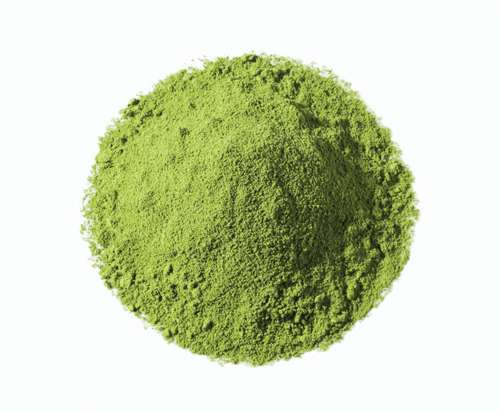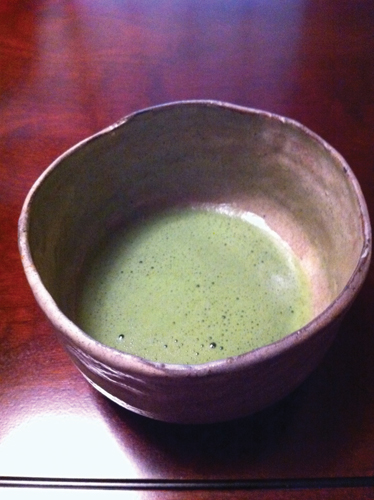
Eyelids are such lightweight flaps, fringed with mere millimeters of lash, and yet, in the midst of an afternoon practice session, when lunch is slogging its way through the intestines, these delicate folds heave downward, leaden and defiant. No amount of willpower prevents them from drawing over the globe of the eyeball, shutting, shut, until the head tips to the side, the lids flutter, and the meditator straightens his back, a heart shuddering from the shock of a short dream interrupted. The simple task of staying awake is one of the mightiest challenges of meditation practice.
So we must find ways to prop ourselves up. My friend Chris Jay, who is a meditation instructor, is a big proponent of coffee. He never retreats without it. “Even in the 1970s, when I was a monk in Daitoku-ji, a Rinzai monastery in Kyoto, I would occasionally sneak out over the back wall for a quick can of warm, sweet coffee just before the evening zazen started.” One problem with coffee is that it is incredibly habit-forming and people can become obsessive about keeping on a steady intake schedule. Coffee is the blood in their veins, and without it things get nasty. I’ve been on retreats where people have tried to quit their habit upon check-in, seeking a sense of purity, and have subsequently taken out their evil withdrawal symptoms on the others around them. It might be considerate to go through your detox prior to entering an environment where people can’t escape your morning crank.
Warm cans of coffee and grande lattes weren’t available when the great 19th-century Buddhist master Jamgon Kongtrul wrote his famous Retreat Manual (essential reading for anyone embarking on retreat), so it’s worth wondering if frothy stimulating espresso drinks would even have been permitted in the cave. The list of dos and don’ts can be quite specific. There are five “black foods”—garlic, onions, flesh, eggs, and radish—that practitioners are often told to avoid, particularly when performing certain practices. Coffee is black, after all. A meditation instructor told me that abstaining from the black foods is said “to help the males tone down their erotic fantasies, which lead to calluses on their hands and the loss of their seed.” And we’re not talking sunflowers here.

It’s clear that the great masters recognized a need for balance between overstimulation and drowsiness. Number five of the eight Mahayana precepts states “no intoxication,” but makes an allowance for tea. “Tea and Buddhism have co-evolved, from China to Japan and Korea. . . both are about ‘awakened mind,’ and tea provides not just a demand for attention, but also a bit of caffeine,” says Gaetano Kazuo Maida, executive director of Tea Arts Institute (TAI). “Meditation masters were often also tea masters, and monasteries often also had tea gardens.” In other words, tea puts the buzz into your zazen. Green tea goes down clean and has more caffeine than coffee. And green tea beats even blueberries when it comes to levels of antioxidants and vitamin C, so you’re guaranteed to breeze out of retreat looking younger and free of scurvy.
There are also delightful rituals around tea, right down to the selection of the saucer, that make preparation feel like a practice in itself. My go-to tea is high mountain oolong picked by monkeys in Taiwan. But my true love is Japanese matcha, a finely milled powder made from shade-grown, de-veined tencha tea leaves packed with exciting properties. Straight up, it’s bitter and fresh. The Japanese serve matcha with pretty little sugar crystals that you grip between your front teeth as the thick green substance slips past. I like to dress my matcha up in ways that would make a proper tea master cringe: a little milk, a little sweetener. The resulting matcha latte is a lovely energizing treat with a caffeine kick and just a bit of protein for some steady energy.
Ingredients:
1 teaspoon matcha powder
3 ounces heated milk or soy milk
A tiny pinch of stevia, agave, or a drop of honey
Add enough water to the powder to make a thin, smooth paste using a whisk or a traditional bamboochasen. If you must, add sweetener, but just the smallest amount. Heat and froth the milk (be sure not to burn it, or the protector deities will be upset with you!), then pour into the tea. Be sure also to make elaborate heart-shaped patterns with the foam for decoration, or it won’t taste good. Or skip the milk entirely and add more water. I do think that matcha tastes much better in a hand-hewn ceramic cup. It’s just not the same in a conventional mug.
I’ve heard a few other tips for the practitioner who wants to avoid mid- practice nod-offs and dullness—for example, avoid simple carbohydrates, candy, and white bread, which give the body quick blood-sugar spikes and the illusion of energy. And don’t eat from midday until the following sunrise; the growling in your stomach will keep you awake. One of the easiest things to put in the body is simply: less. The stomach is like a washing machine and needs space to break down whatever you’ve poured in there. When you eat less, the body spends less energy on digestion and the brain isn’t as drained. When you eat slowly, chewing thoroughly, you have more time to reach the point of satiation.
All of this is obvious and has been stated a thousand times before, but the retreat mind is a mind constantly caught in the act, like a rodent when the lights are switched on, and sometimes it acts irrationally as it scatters about seeking comfort.
Mealtime is the turning point of the day, the primary source of immediate comfort for the retreatant, and also, of conflict. There are legendary tales in the Buddhist circuit of the great feuds that have taken place over food in long-term retreats. “There were certainly squabbles over food. Whose turn it is to cook, who left the damned dirty frying pan in the sink so others can’t use it. . . and so on and so on,” said one three-year retreatant who wished to remain anonymous to protect his golden reputation. He admitted with not a little regret that there was much tantrum-throwing and adolescent behavior around the food situation during his group retreat. Hoarding was one of the most common post-meditation practices, he said. “It was funny to see two grown adults arguing over the last carrot.”
But now that the retreat is over, when the retreatants meet, he says the steak knives have all been put away, and “it’s fun to apologize to each other about what childish idiots we were.”